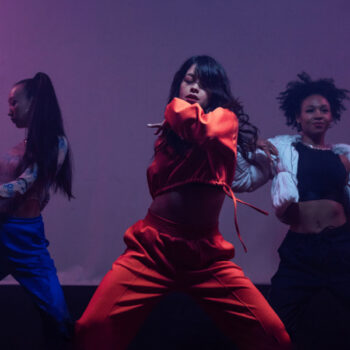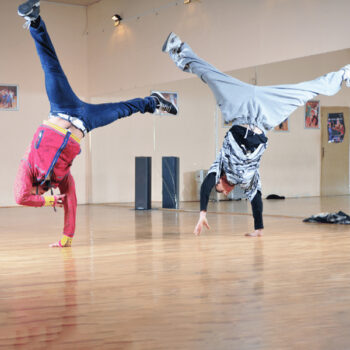What is the meaning of breakdancing?
Breakdancing, also known as b-boying or breaking, is a dynamic and captivating street dance style that originated in the urban communities of New York City during the 1970s. It is characterized by its acrobatic movements, intricate footwork, and explosive power. Breakdancing is not only a dance form but also a cultural movement that encompasses art, hip hop music, fashion, and self-expression.
What is the breaking dance style?
Breaking dance style is a form of street dance that emerged from hip-hop culture. It incorporates a wide range of movements, including intricate footwork, freezes, spins, and power moves. Breaking is often performed in breakbeat, funk, or hip hop music and involves a combination of athleticism, creativity, and musicality.
What defines breakdancing?
What defines breakdancing is its unique combination of athleticism, creativity, and self-expression. Breakers showcase their skills through a series of explosive and acrobatic movements, including intricate footwork, power moves such as spins and flips, and freezes that require incredible strength and balance. Breakdancing is not limited to specific steps or choreography but encourages individual style and improvisation.
What are the different styles of breakdancing?
Breakdancing encompasses a variety of styles that showcase the diverse range of movements and techniques within the art form. Here are some of the popular break dance styles:
- Toprock: Toprock is the initial phase of a break dance routine and involves dance movements performed while standing upright. It serves as an introduction and sets the rhythm and style of the performance.
- Downrock: Downrock, also known as footwork, is performed on the floor and focuses on intricate leg movements, spins, and transitions. It requires agility, coordination, and creativity.
- Power moves: Power moves are dynamic and acrobatic movements that emphasize strength and athleticism. Examples include spins, flips, and aerial moves like windmills, headspins, and flares.
- Freezes: Freezes are static poses held during a break dance routine. They require balance, control, and the ability to showcase strength and flexibility.
Break dance styles list
There are numerous break dance styles, each with its unique characteristics and origins. Some of the most notable break dance styles names include:
- B-boying or b-girling: B-boying is considered the original form of breakdancing and involves a combination of top rock, down rock, power moves, and freezes.
- Popping: Popping is a funk-based dance style characterized by quick muscle contractions and relaxations, creating a popping effect in the dancer's body.
- Locking: Locking is a dance style that incorporates distinctive pauses, or "locks," in between fluid movements. It originated in Los Angeles and emphasizes funk music and soulful expression.
- Breaking: Breaking is an umbrella term that encompasses various styles of break dance. It is known for its explosive and energetic movements, combining elements from different dance forms.
Break dance origin
Breakdancing originated in the late 1960s and early 1970s in the Bronx, New York City. It was born out of the hip-hop movement that emerged from African American and Latino communities, where young people gathered to express themselves through music, dance, and graffiti.
The origins of break dance can be traced back to the street parties and block parties held in the Bronx, where DJs played funk and soul music. The dancers, known as breakers or b-boys and b-girls, would gather in circles and perform improvised dance moves to the rhythm of the music.
The earliest form of break dance was known as top rock, which involved footwork, shuffles, and spins performed while standing up. It was followed by down rock, which involved more acrobatic movements performed on the floor, such as kicks, spins, and freezes.
As break dance became more popular, competitions or battles began to emerge, where breakers would compete against each other to showcase their skills. These battles became an essential part of the break dance culture and continue to this day, both in the US and around the world.
In the 1980s, break dance gained mainstream recognition and became a cultural phenomenon. It appeared in music videos, movies, and commercials, and its influence spread across the world, leading to the emergence of different types of break dance styles and subcultures.
Today, break dance remains a vital part of hip-hop culture, with a vibrant community of breakers, DJs, and graffiti artists continuing to push the boundaries of the dance form and its cultural significance. The history of break dance is a testament to the power of creativity, self-expression, and community, and its influence on the world of dance and popular culture continues to inspire generations of young people.
The Evolution of Break Dance: From Streets to Global Phenomenon
The influence of break dance can be seen in various aspects of popular culture, from music videos and movies to fashion and advertising. Its energetic and visually striking nature has made it a favorite among performers and choreographers, who often incorporate breakdance moves into their routines.
Moreover, break dance has created a vibrant and tight-knit breakdancing community, who come together to share their passion, inspire one another, and compete in battles that showcase their skills and artistry. Break dance events, such as the international breakdancing competition and showcases, have become platforms for dancers to showcase their talents and connect with fellow enthusiasts from around the globe.
Break dances examples
There are countless examples of break dances that showcase the incredible skill and creativity of breakers. Some iconic moves include:
- Windmill: The windmill is a power move where the breaker rotates their body on the floor in a circular motion, supported by their hands and shoulders. It creates a visually stunning illusion of continuous spinning.
- Head spins: The head spin is a challenging move where the breaker balances their body upside down on their head, spinning in a circular motion. It requires exceptional upper body strength and control.
- Flare: A flare is a dynamic power move in which the breaker kicks their crazy legs in a continuous spinning motion while their torso remains close to the ground. It showcases flexibility, coordination, and strength.
- The 1990s: The 1990s is a combination move that involves spinning on one hand while the legs are extended in a standing position, creating a visually captivating and impressive display of balance and control.
- Power Freeze: Power freeze is a freeze that requires the breaker to hold a challenging and visually striking pose, showcasing strength, flexibility, and creativity. Examples include the air chair, handstand freeze, and baby freeze.
How to dance break style?
To learn break dance style to become a b-boy, you need to approach it with dedication, practice, and a deep passion for the art form. Here are some steps to help you get started on your breakdancing journey:
First and foremost, it's crucial to study the fundamentals. Begin by familiarizing yourself with the basic movements of breakdancing, such as top rock, down rock, and freezes. Take your time to understand and master each element before progressing to more complex moves. Building a strong foundation is essential in break dancing.
Next, seek out a mentor or join a breakdancing rock steady crew. Experienced breakers can offer valuable guidance and feedback to help you improve. By connecting with others who share your passion, you can learn from their expertise and experiences. Joining local break dancing communities or taking classes can provide opportunities for collaboration, inspiration, and growth.
Consistency is key in breakdancing. Regular practice is essential to build strength, enhance coordination, and refine your skills. Dedicate specific time slots to training, and make sure to explore different styles and breakdance moves. Push yourself to step outside your comfort zone, trying new techniques and challenging your abilities. With persistence, you'll see progress and improvement over time.
While learning from others is crucial, breakdancing encourages individual expression. Develop your style by experimenting with various movements, combining them in unique ways, and infusing your personality into your urban dance. Embrace your creativity and let your inner voice shine through your movements. Developing a signature style sets you apart and adds depth to your break dancing journey.
To truly grasp break dancing, immerse yourself in the hip-hop culture that birthed it. Listen to hip hop music, which provides the rhythmic foundation for breakdancing. Watch performances and battles to observe different styles and techniques. Stay updated on the latest trends and innovations within the breaking community, as it continues to evolve. Engaging with the culture allows you to better understand the roots and spirit of break dancing, further enriching your experience.
In conclusion, break dance has come a long way from its origins on the streets of the Bronx. Its evolution into a global phenomenon highlights the power of art and cultural expression. Break Dance continues to captivate audiences with its athleticism, creativity, and individuality. As it moves forward, break dance will undoubtedly leave a lasting impact on the world of dance and inspire future generations to push the boundaries of self-expression and movement.




